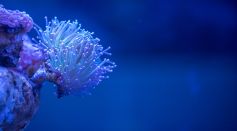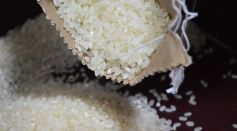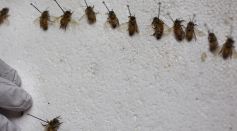ENVIRONMENT & CLIMATE

Genomes Discovery Changes View on Bronze Age Italy's Societal Organization and Ancestry

Cooler, Longer-Lasting Solar Tech Could Increase Yearly Production of Energy

Paleozoic "Living Fossil" Still Thriving on Ocean Floor After Being Missing for 270 Million Years

Uncooked Rice May Contain Harmful Microplastics, Sparking Health Fears to Millions of Consumers

Bunny "The Talking Dog": Self-Aware Canine Asks About the Meaning of Life
Iceland's Volcano Spews Lava Geysers High Into the Air, Thrill Seekers Left in Awe

Remains of 9 Neanderthals Found Near Rome, Offering Insights on Prehistoric Population

Comprehensive Genome Analysis Reveals Four Known Species of Giraffes
Probiotic Bacteria May Help Corals Endure Heat Stress, Bleaching

Modern Human Lifestyle a "Perfect Storm" for Pandemics Like COVID

Trained Bees Detect Coronavirus? Scientists Use These Insects to Identify COVID-19 Through Smell

Frog-Faced Turtle Endemic in Madagascar Unearthed After 100 Million Years, Reptile Sucks Down Its Prey!
Sharks Use Earth's Magnetic Field as Compass to Travel 12,000 Miles Across Sea
Mount Sinabung Eruption: People Warned of Volcanic Ashfall; What are Its Effect on Human Health?
Most Popular

3I/ATLAS: The Truth Behind the Mysterious Interstellar Object Now Targeted by NASA and UN Teams

Hellfire Missile Video Reveals MQ-9 Reapers Being Used for Aerial Combat

Nvidia's Jetson Thor Could Make Humanoids Smarter Than Ever

Cyber Attack on Jaguar and Land Rover Cripples UK Operations: 1 October Earliest Restart as Deliveries Disrupted Worldwide





